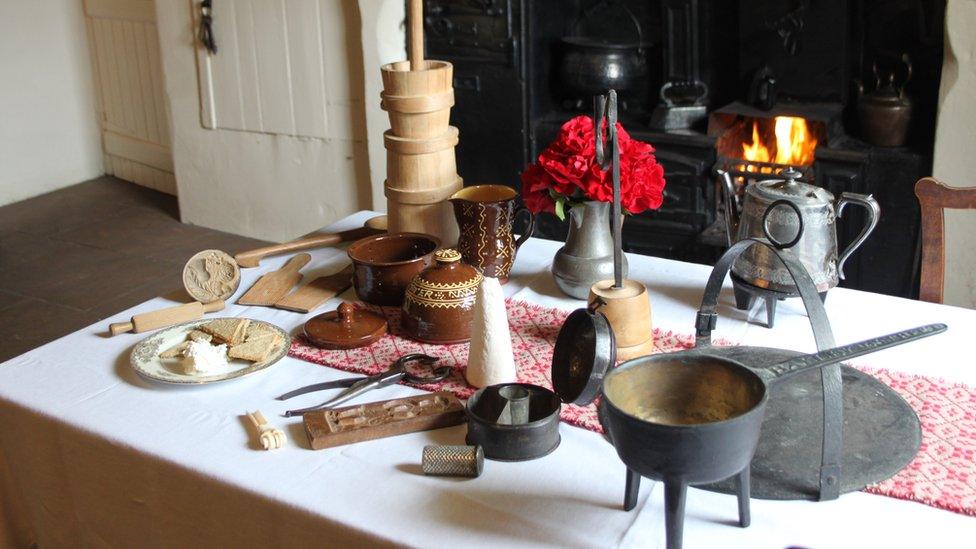Ellisland Farm's role in Robert Burns' story examined online
- Published

Robert Burns lived at Ellisland, near Dumfries, with his wife Jean Armour
The role of a south of Scotland farm in the work and life of Robert Burns has been put under the microscope.
Ellisland, on the banks of the River Nith near Dumfries, includes a cottage designed by the poet in 1788 after the success of his Kilmarnock edition.
Prof Gerard Carruthers said the south of Scotland site was central to Burns' artistic and personal development.
A global audience was expected for his online seminar with fans of the poet from around the world joining in.

A new trust took over the running of the farm last month
Ellisland Farm - Burns' first home with his wife Jean Armour - was one of many small museums which had to shut due to the coronavirus pandemic.
A new charitable trust took over its management last month.
Prof Carruthers - chair of Scottish Literature at the University of Glasgow and also secretary of the Robert Burns Ellisland Trust - led the online seminar.
He said the farm had a strong claim to be the home of European romantic song.

Burns wrote some of his most famous works while at Ellisland
The seminar looked at Burns' "crucial Nithsdale social relationships" and at the writing of Auld Lang Syne and Tam o' Shanter.
It also examined Burns' mental, physical and imaginative health.
"Ellisland speaks deeply to the psyche of Scotland's national poet and once we grasp this history we begin also to realise the potential for Ellisland as a major heritage site for the future," said Prof Carruthers.

Prof Gerard Carruthers led the online discussion of Burns' time at the farm
Burns fans from around the world signed up for the free event.
The new trust - chaired by MSP Joan McAlpine - was formed after the former Ellisland Trust decided to wind itself up after almost a century.
"The new volunteer board took over at the worst possible time mid-pandemic and there is a lot of work to do," she said.
She said the seminar was the chance to mark the "next chapter" in Ellisland's life and underline how important a place it was for Burns.
- Published24 January 2020

- Published10 January 2020
